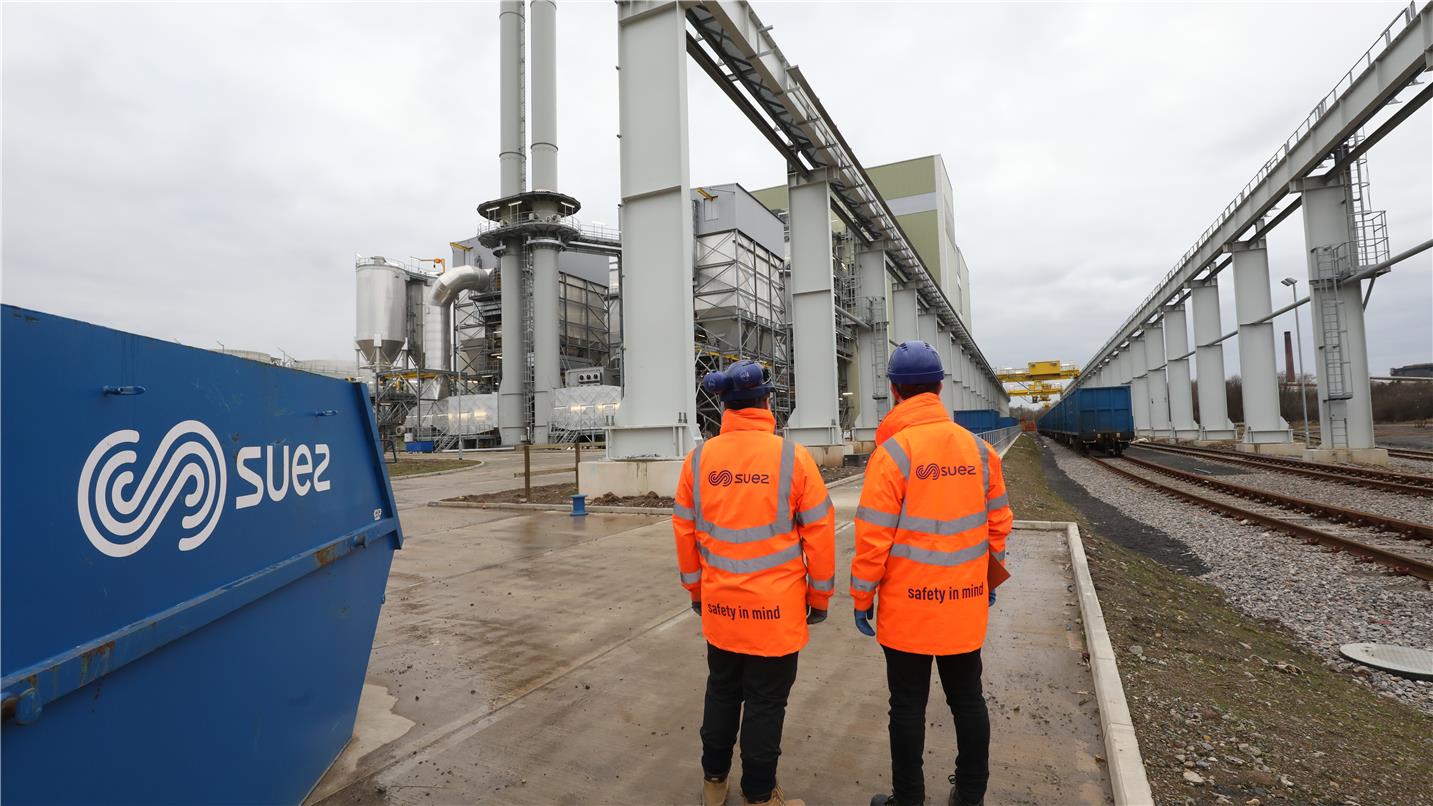The mission
To recover energy from residual waste from households across Merseyside and Halton
Merseyside Energy Recovery Limited (MERL) was appointed by Merseyside Recycling and Waste Authority (MRWA) to divert this waste from landfill, save council taxpayers’ money and benefit the environment and local economy by generating energy from waste.
The consortium consists of three companies – SUEZ recycling and recovery UK, Sembcorp Utilities UK and I-Environment Investments Ltd.
SUEZ is the operator of the Wilton energy-from-waste facility.
Our solution
To avoid truck movements and the associated pollution and carbon emissions, SUEZ developed a rail transfer loading station in Knowsley, Merseyside. From here the residual waste is transported by train to the Wilton energy-from-waste facility.
The state-of-the-art power plant began operations in December 2016. It is capable of generating up to 50 megawatts of electricity – sufficient to power more than 63,000 homes.
The steam produced can also be exported (instead of being used to generate electricity) at three different pressures to industrial users on the Wilton International Industrial Estate.
The results
The Wilton energy-from-waste facility makes a major contribution to the power needs of local manufacturing.
About half of the steam generated is used by the businesses on the industrial estate. Providing energy as steam rather than electricity is more efficient, which means that more energy from the waste is used productively. This energy is supplied to Sembcorp for distribution to meet local demand on any given day.
The rest of the steam is used in a turbine to generate electricity, which can be distributed to businesses on the industrial estate or fed into the National Grid.
The household waste diverted from landfill is being put to good use – powering the local economy and avoiding more than 127,000 tonnes of carbon emissions each year, compared with landfilling. This steam and electric power is a valuable resource as well as a sustainable energy substitute for fossil fuel.

